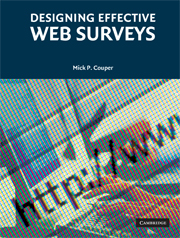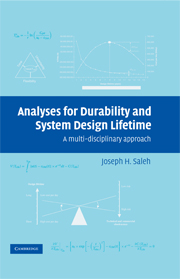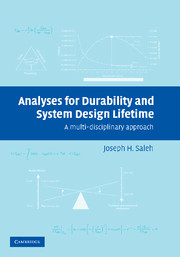Designing Effective Web Surveys
Designing Effective Web Surveys is a practical guide to designing web surveys, based on empirical evidence and grounded in scientific research and theory. It is designed to guide survey practitioners in the art and science of developing and deploying successful web surveys. The author guides the researcher through the steps involved, from the basic building blocks and suggests ways to increase visual impact and interactivity. Throughout, he considers the importance of layout and design, and attention is also given to the way questions are put together. The book is intended for academic, government, and market researchers who design and conduct web surveys.
- Guides the reader through developing and designing effective web surveys
- Based on solid research and empirical evidence
- Uses examples to highlight the elements of good and bad survey design
Reviews & endorsements
'… website designers interested in programming web surveys and those who already do will find this book useful in understanding how and why the design of these instruments matters from a survey research perspective.' Leah Melani Christian, Pew Research Center for the People and the Press
Product details
November 2008Paperback
9780521717946
416 pages
235 × 177 × 22 mm
0.92kg
207 colour illus. 1 table
Available
Table of Contents
- 1. The importance of design for web surveys
- 2. The basic building blocks
- 3. Going beyond the basics: visual and interactive enhancements to web survey instruments
- 4. General layout and design
- 5. Putting the questions together to make an instrument
- 6. Implementing the design.





